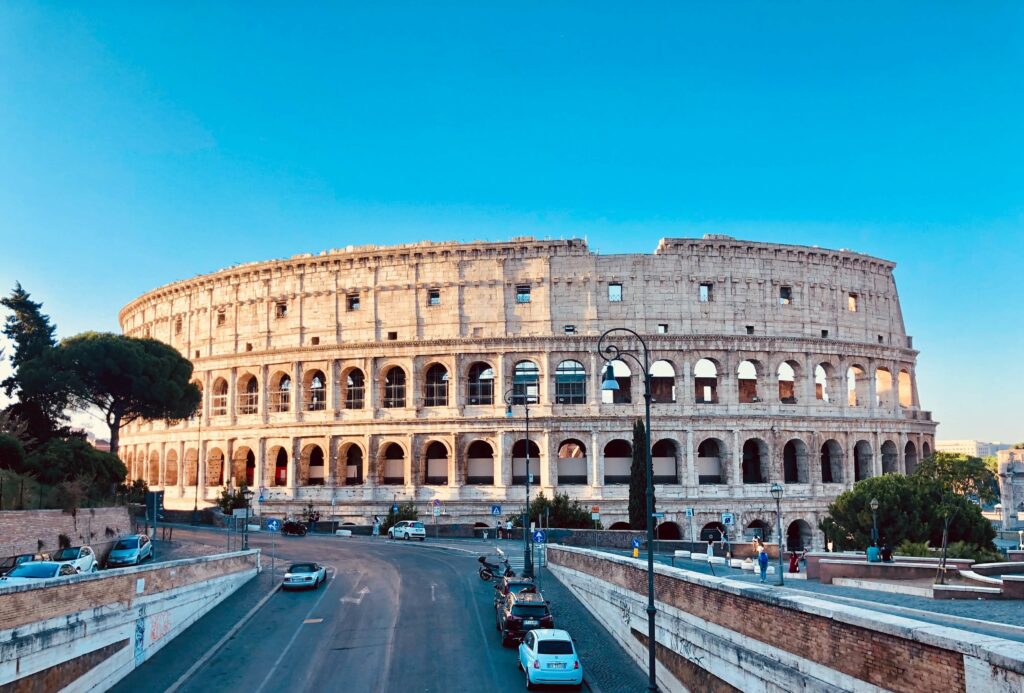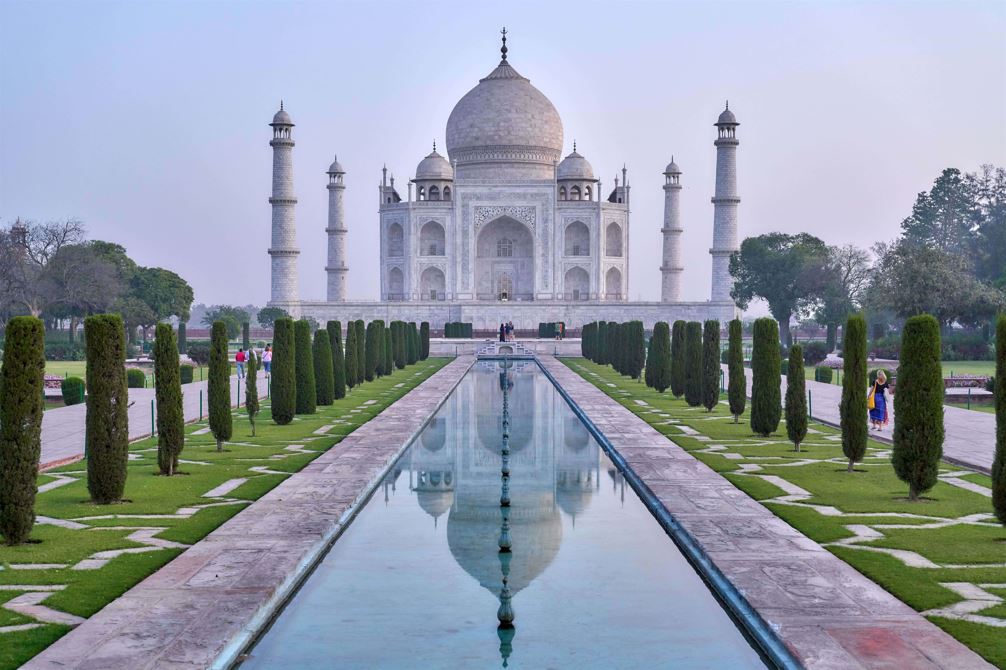Architectural heritage and culture is a tangible testimony to the past and the quintessential nature of a society that endures over time. Therefore, it reflects the wealth of history, identity and creativity of a place. Over the centuries, buildings and monuments have been constructed to fulfil specific functions. At the same time they serve to symbolise the values, beliefs and aspirations of the communities that created them. Essentially, they represent the physical memory of a community. Every ancient building, every monument, every cobbled street tells a unique story that connects the past with the present. These architectural structures bear living witness to how societies have developed over the centuries. As a result, they provide their inhabitants with a window onto understanding their own history and cultural roots.

Illustration 1: Front view of the Roman Colosseum in Rome, Italy, connecting the city – Photo from Unsplash
A link to the past: The Roman Colosseum
The Roman Colosseum is also known as the Flavian Amphitheatre. It is one of the most emblematic and significant monuments of ancient Rome. It remains an enduring icon in the history of architecture and world cultural heritage. This majestic amphitheatre is located in the heart of Rome in Italy. With its impressive architecture it has captivated generations of visitors and scholars since its construction in the 1st century AD.
The architecture of this building is an impressive testimony to the ingenuity and skill of the ancient Roman architects. The amphitheatre was designed to host public performances and games. Elliptical in shape, it is 189 metres long and 48 metres high. The estimated capacity of its stands was for over 50,000 spectators. Consequently, it was one of the largest sporting venues in the ancient world. Built mainly from travertine and concrete, the original façade was also adorned with columns and sculptures, further enhancing its grandeur.
The Colosseum’s importance in cultural heritage is immeasurable. Not only is it an outstanding feat of Roman engineering and architecture, it also symbolises the grandeur of the Roman Empire.
Preservation of cultural identity: The Great Wall of China
The Great Wall of China is an architectural marvel that winds through the mountainous landscape of northern China. It is one of the most impressive and significant monuments in human history. This gigantic defensive structure stretches over 21,000 kilometres. As such, this monumental engineering achievement is an enduring testament to China’s rich cultural history.
The Great Wall of China was built in stages from the 7th century BC to the 17th century AD. It was subject to renovations and extensions under different dynasties. The architecture combines stone and earth walls, as well as watchtowers, fortresses and trenches. The wall was originally built to protect China from raiding nomadic tribes and other external threats. Its intricate design and colossal scale demonstrate a deep understanding of topography and military strategy at that time.
Today, the Great Wall of China is one of the world’s most popular tourist destinations. Accordingly, it has been declared a UNESCO World Heritage Site. Conservation and restoration are vitally important to ensuring the preservation of this priceless legacy for future generations.

Illustration 2: Aerial view of the Great Wall of China at sunset – Photo from Istock
Inspiration and learning: Taj Mahal
The Taj Mahal is an architectural masterpiece in Agra, India. An iconic monument of beauty and elegance, it has captivated the world with its splendour and historical significance. It was built in the 17th century under the Mughal emperor Shah Jahan. The emperor intended it as testament to his undying love for his wife Mumtaz Mahal, whose name means ‘the Palace Jewel’.
The Taj Mahal is a sublime example of the Mughal architectural style, which fuses Persian, Islamic and Indian elements. The main structure is built in gleaming white marble. As a result it has an ethereal appearance and the quality of changing light throughout the day. The central mausoleum is flanked by four minarets, 40 metres high. Not only are these aesthetic features, they also serve the purpose of a safety measure against earthquakes. Inside the Taj Mahal lie the tombs of Mumtaz Mahal and Shah Jahan, decorated with intricate marble detailing and inlaid precious stones.
Today, the Taj Mahal is one of the world’s most visited tourist destinations, and it is an important economic driver for the region. It is also an emblem of India and its culture, and has been declared a UNESCO World Heritage Site. This monument serves as a constant reminder of the human capacity to create timeless and moving works of art. Enduring works, that bear witness to the creativity and dedication of past generations, inspiring future ones.

Illustration 3: Front view of the Taj Mahal, India- Photo from Unsplash
Conservation and sustainability: The Palace of Westminster
The preservation of heritage and cultural architecture also entails conserving resources and promoting sustainability. Rather than demolishing and replacing old buildings, the environmentally friendly way to maintain our architectural heritage is to restore and conserve existing ones.
The Palace of Westminster is also known as the Parliament of the United Kingdom. An architectural and political monument, it has great historical and cultural significance. It is located in the heart of London, along the banks of the River Thames. This majestic building is the seat of British legislature, symbolising the country’s democracy and parliamentary tradition.
The Palace of Westminster is an outstanding example of Victorian Gothic architecture. This style is characterised by splendid decorations and intricate details. It was designed by architects Charles Barry and Augustus Pugin. Construction was completed in the 19th century following a devastating fire that destroyed the original structure in 1834. The palace façade is adorned with pinnacles, gargoyles and sculptures depicting historical figures and allegories of justice and wisdom. Thanks to its architecture and the significant role it played in developing democracy, it remains a world heritage monument of incalculable value.

Illustration 4: Panoramic view of the Palace of Westminster in London, United Kingdom – Photo from Istock
Architectural heritage and culture is far more than a mere collection of old buildings. They provide a link to our past. Similarly, they are an expression of our cultural identity, an economic driver and a source of inspiration and learning. Furthermore, this architecture serves as a reminder of the values and lessons of history. It is fundamental to building a more inclusive and sustainable future. Thus, preserving and appreciating our architectural heritage is essential to enriching our lives and those of future generations.

